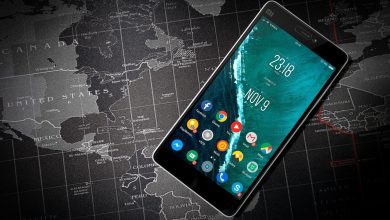How Restarting Your Smartphone Fixes Most Problems
Turning it off and then back on again does make a difference in the long run.
If you tell someone that you are having issues with your phone or any other piece of technology, the very first question that they will probably ask you is “Have you tried turning it off and then back on again?” Due to the fact that this is relatively general advice, it may come across as annoying. But does this supposedly easy solution include any kernels of reality, or is it merely a piece of technological urban legend?
What Occurs When You Disconnect Your Phone From the Power Supply?
A seemingly insignificant action, turning off your phone actually triggers an important chain of events. Let’s talk about RAM.
RAM, or random access memory, is a type of memory that stores data temporarily as and when the CPU of the phone requires it. RAM can also be found in a wide variety of other devices, such as tablets, personal computers, laptops, and gaming consoles. Your phone’s random access memory (RAM) is used to carry out a variety of tasks within any app you’ve used since the last time you turned your phone off and back on again. The data that is stored in your RAM is used.
RAM allows you to quickly access a webpage or app because it provides your device with the relevant data that has been stored in anticipation of your next move. If you want to access a webpage or app, you can do this quickly using RAM. RAM on modern smartphones can range anywhere from 6 to 12 gigabytes. In spite of the fact that most individuals don’t need much more than 6-8GB of storage space, there are situations in which you may want additional memory (and it doesn’t hurt to have more if the smartphone is within your price range!).
Keep in mind that you won’t need the data stored in your RAM for very long, even though it may not seem like much in comparison to the overall capacity of your phone’s long-term storage.
When your phone is restarted for any reason, all of the data that was previously stored in its RAM will be deleted. There are several approaches to clearing the RAM on your device in addition to rebooting, but in most cases, restarting your smartphone is the simplest and most convenient technique. Additionally, there are numerous advantages to restarting your mobile device.
How come turning off your phone solves many of your problems?
When your phone’s random access memory (RAM) becomes full of data that is not necessary, the performance of your phone as a whole may experience a considerable decrease. It can be aggravating when apps and files take a long time to load, and it might make you feel as though your phone is getting on in years. Even if you exit all of your applications by hand after using them, residual data may still be stored in the random access memory (RAM). When the phone is turned off fully, the power supply to the RAM is cut off, which clears the memory entirely.
The amount of free space in your phone’s random access memory (RAM) determines how quickly it can respond to orders. Therefore, if you observe a drop in the performance quality of your phone, rebooting it can be a quick cure that you can try. However, there is no assurance that this will solve the problem. However, running out of available memory is not the only factor that might contribute to a sluggish smartphone’s performance. The performance of a phone can be slowed down by a number of factors, including outdated operating systems, batteries in poor condition, and even malicious software.
Therefore, if restarting the device does not resolve the issue, there may be another problem that you will need to investigate.
Restarting your phone can help fix general difficulties within apps and connectivity problems that you may be experiencing. Take, for instance, the case where an application won’t launch. Clearing the data from your RAM requires turning off and then restarting your phone. This will remove any outdated or fragmented app data that may have been stored in your RAM. This is often helpful in resolving simple problems with applications.
You may have attempted to restore your Wi-Fi or cellular network connection by switching to airplane mode, which is a solution that is sometimes successful. The same holds true for starting completely over. A reconnection with your cellular service provider is established automatically whenever you restart your phone. In addition to this, there is a possibility that you will be immediately rejoined to your Wi-Fi network (assuming you have your settings configured to allow auto-connections).
Again, restarting your phone is not a foolproof way to fix problems within an app or with a connection to the internet. There is a possibility that the app you are utilizing is at fault, as opposed to the network to which you are attempting to connect (which can, for example, have an inconsistent connection) (such as outdated software). There is also a possibility that problems with the hardware of your phone need to be addressed.
There Is More to It Than Just anecdotal Evidence That Says You Should Restart Your Phone.
It could appear as though restarting your phone is an unnecessary piece of advise for troubleshooting problems. After all, most people have the misconception that it is a simple solution. But in actuality, this is something that doesn’t always hold true. You may solve a variety of problems with your phone simply by turning it off and on again (though it is not a universal solution). Therefore, if you are having issues with performance, connectivity, or anything else of the sort, you should perform a quick restart to see if this helps.









